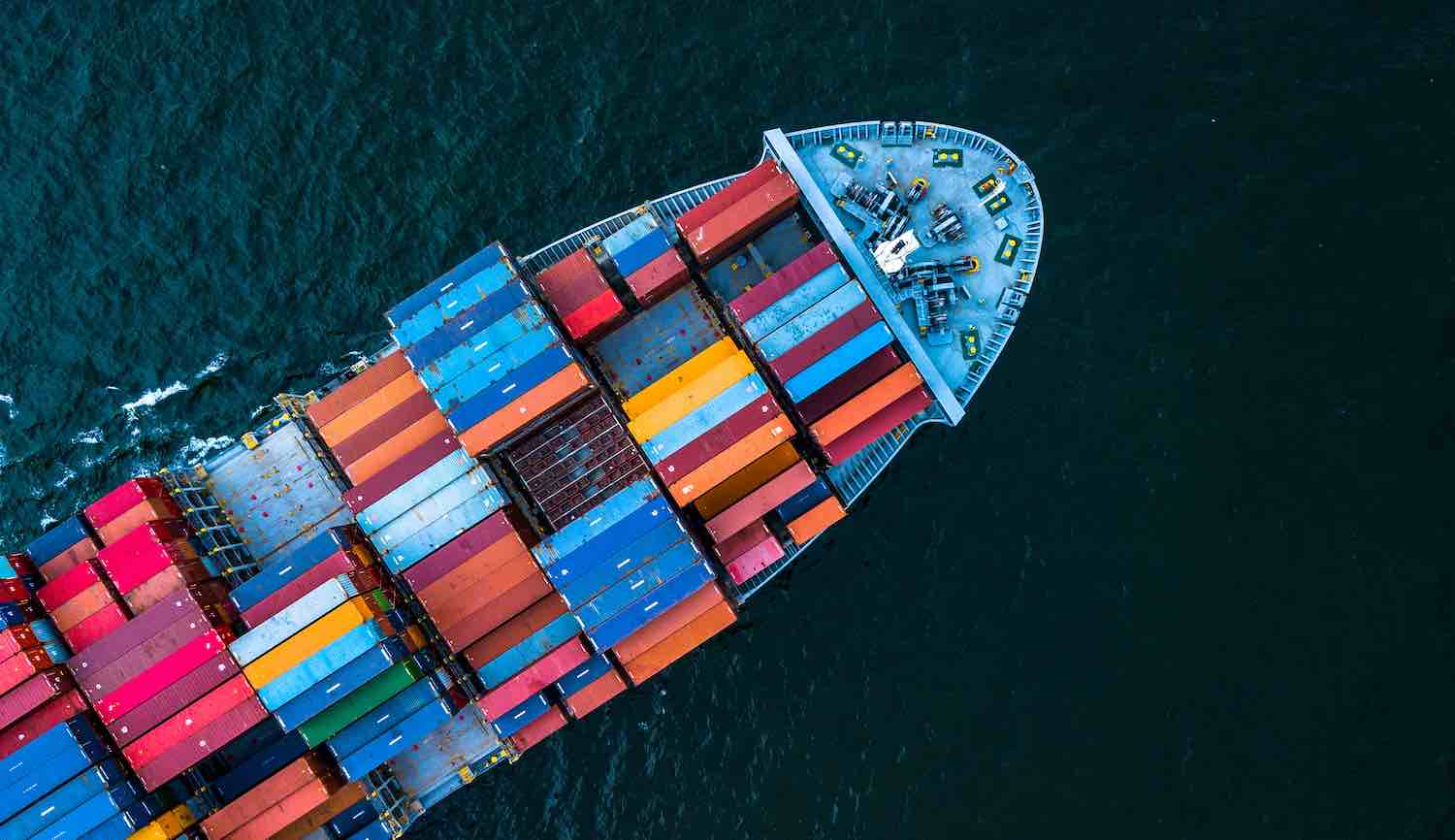The elastic holding together our global supply chain has snapped. From paper towels and carbonated drinks to automobiles and chicken dinners, consumers worldwide are struggling to get a steady supply of goods once easily available and always affordable.
Global port delays have left retailers scrambling for alternative shipping options. Across Europe and the UK, a chronic shortage of lorry drivers is resulting in fuel shortages and limited deliveries of food and other necessities. Apparently Christmas is ruined.
Factory closures in Asia due to public health concerns have led to a scant supply of silicon chips – a tiny component with the power to create big problems. Without chips, car manufacturers in the U.S. have been unable to produce new inventory, limiting the supply of rental cars, which were already low at the start of the pandemic as rental companies tried to save cash.
What’s going on here? Are the supply shortages just ripple effects of the Covid-19 roller coaster? Is this whiplash due to consumer demand plummeting at the start of the pandemic and then surging sharply but unsteadily with the recovery?
The pandemic is the proximate cause of today’s supply chain issues, but it’s not the whole story. If we want to abate this crisis and avert another, we must tackle the root causes beyond Covid, including:
- an over-emphasis by corporations on concentrated, low-cost operations
- growing consumer appetite for just-in-time and disposable goods
- and, most importantly, the market’s fixation on quarterly performance, which overlooks chronic underinvestment in resilience and sustainability by corporations and poses enormous financial risk.
Our supply chain model has failed us. We now have an open invitation to do things differently. That will require investors to step up, put their short-term interests aside, and proactively work with corporations to build a better future. Otherwise, the natural short-term nature of the markets will continue to drag businesses and investors in the wrong direction.
A tale of two companies
Covid-19 was just a warm up. Climate change has already prompted disruptions, disease, and devastation that are becoming our new normal. Companies that have underinvested in their supply chains to chase cheap labor over robust processes must change direction.
Take the example of Nike.
In September, the Oregon-based sports apparel maker missed analysts’ quarterly financial targets and predicted more disruption given the Covid-driven summer shutdown of Vietnam’s economy. Nike produces over half of its footwear and a third of its apparel in Vietnam, a low-cost labor market.
Nike would be better served by working more directly with its suppliers on the ground, conducting stakeholder engagement to understand labor conditions, and setting a production schedule that accommodates workers’ needs.
Instead, Nike’s manufacturers operate according to an agenda driven by Nike’s stocking demands and the global sales cycle. Such “just-in-time” supply chains, perfected by the likes of Apple and its Taiwan-based manufacturer Foxconn, depend on the availability of a cheap unskilled labor supply that can be turned on and off as companies and consumers require.
The low-paid workers in these just-in-time supply chains – whether a factory worker in Shenzhen, a seamstress in Bangladesh, a meat packing worker in Omaha, or your sports shoemaker in Ho Chi Minh City – typically have little access to healthcare, face poor living conditions, and can be hired or laid off on short notice.
Executive decisions to extract maximum value at the lowest cost is a strategy that works – provided everything else in the world works. When quarterly earnings reports are considered the most important signal of whether a company is “doing well,” executives are incentivized to cut costs rather than make select, smart investments that could prepare them for future challenges. And so, we are left with no stretch in the elastic connecting our global supply chains. The elastic snaps, causing the kinds of supply shortages and soaring prices we are currently experiencing.
Imagine if companies actually invested in sustainable – and human – supply chain management. Doing so would have a positive impact on the economy – the supply chain slowdown is already dragging down global economic growth – and lead to more robust and profitable businesses.
Case in point: another company headquartered in the Pacific Northwest.
As a coffee manufacturer and global coffeehouse chain, Starbucks is obviously dependent on a cheap and abundant supply of coffee. Starbucks uses a vertically-integrated supply chain, meaning it is directly involved in every part of the supply chain process, from the bean in the field to the Pumpkin Spice Latte in the cup.
The company sources its coffee, in part, by providing loans on reasonable terms to coffee growers around the world and focusing on ethical standards. It also locks in its commodities price well in advance of harvesting. The result of this forward-looking approach to labor, production, and pricing is that Starbucks can more easily ride out bumps in the global goods and services market.
Starbucks is not immune to supply chain or ESG issues, but the coffee company’s experience demonstrates that thoughtful investment and supply chain management can work to the benefit of all stakeholders. It’s the reason why rising coffee prices haven’t (yet) been passed on to you when you go to get your daily grande pumpkin spiced latte with two pumps of white chocolate mocha, whipped cream and sprinkles.
Stepping up
Wall Street, however, does not make it easy for companies to invest in their supply chains. A June 2021 inter-agency report published by the White House found that a “focus on maximizing short-term capital returns has led to the private sector’s underinvestment in long-term resilience.” Indeed “firms in the S&P 500 Index distributed 91% of net income to shareholders in either stock buybacks or dividends between 2009 and 2018. This has meant a declining share of corporate income going into R&D, new facilities or resilient production processes.”
91 percent. Let that sink in.
Excessive distributions enrich executives and shareholders, and Wall Street tends to disfavor anything that diverts profits to other uses. It has a track record of punishing companies and leaders who try to take a more long-term approach to building suitable supply chains.
When Walmart said it would raise pay for its lowest-paid workers earlier this year, investors pushed its stock price down more than 6%. Emmanuel Faber was ousted as CEO of the French consumer goods group Danone this past March after investors balked at his efforts to green the company’s supply chain. (In an interview with the Financial Times Faber said his departure really had to do with a boardroom struggle, and that “ESG was the excuse that people found to play this game.”)
Ultimately, investors lose out when sustainable leaders like Faber are chased away. Over $35.3 trillion in assets are subject to some level of sustainable investment screening. The vast majority of those assets – about one third of the overall market – are invested in equity. Yet, ask these market participants how much they have done to ensure the businesses in which they’re invested become more sustainable and resilient, and… overwhelming silence.
Efforts like the Omidyar Network’s Reimagining Capitalism initiative, the Fair Distribution Network, and the Imperative 21 campaign are good steps in the right direction, but they alone cannot create the urgency or action needed at scale. We need the entire $35.3 trillion to step up and start making a difference – today.
Here are five steps that investors can take to ensure we build the global supply chain that our economy needs:
1. Demand long-term forecasting from Wall Street and market participants. Generation Investment Management’s David Blood and others have for more than a decade pushed for a longer-term perspective from Wall Street analysts and investors. Investors must look beyond short-term results to help change investment manager incentive structures to favor long-term outcomes and clawbacks. Similarly, allocators should encourage managers to use more ESG-oriented sources for data and research.
2. Push for changes to executive compensation. Excessive focus on share packages and options drives short-term thinking and encourages CEOs to boost their pay over the short-term. Strengthening sustainability to shore up future performance must be part of the executive compensation equation.
3. Endorse companies that are making positive steps. Take Engine No. 1’s recent investment in General Motors – a sign of support for the company’s transition to an all-electric future. Investors, even those in passive indexes, can use their voice to stand up for companies that are doing good, whether it is greening operations or improving wages and working conditions.
4. Support companies that are having a positive, innovative impact on the global supply chain. Support creative and innovative solutions, such as the emerging asset class of Natural Asset Companies or clean technology. While this may require less benchmark hugging and more active management, there are many options for allocators to support innovation in public and private markets.
5. Require supply chain transparency globally, and, where appropriate, encourage local manufacturing. Innovations like the Brooklyn Navy Yard, which brings manufacturing jobs and small business back to the former Navy outpost in Brooklyn, show the potential to rebuild manufacturing hubs with good paying jobs in the U.S. investors must call upon companies to track where their goods are coming from and what labor conditions look like across the supply chain, as vertical integration is vital to improved transparency and our understanding of risks.
What else do you think investors can do to help make the global supply of goods and services sustainable? What actions can be taken right now without the need for regulation or other changes?
We know what the problems are and where their causes lie, so we must shift to sourcing solutions and amplifying our voices on the actions needed. After all, keeping toilet paper stocked on supermarket shelves is going to feel like a cake walk compared to what is coming as we start experiencing the food shortages, droughts, and mass migrations from climate driven weather extremes.
Yana Kakar is a leading ESG expert, a sustainable investor, and Global Managing Partner Emeritus of Dalberg Advisors. An early believer in realizing return through – not despite – social and environmental considerations, Yana has dedicated her career to developing responsible and sustainable strategies for businesses and investors.











